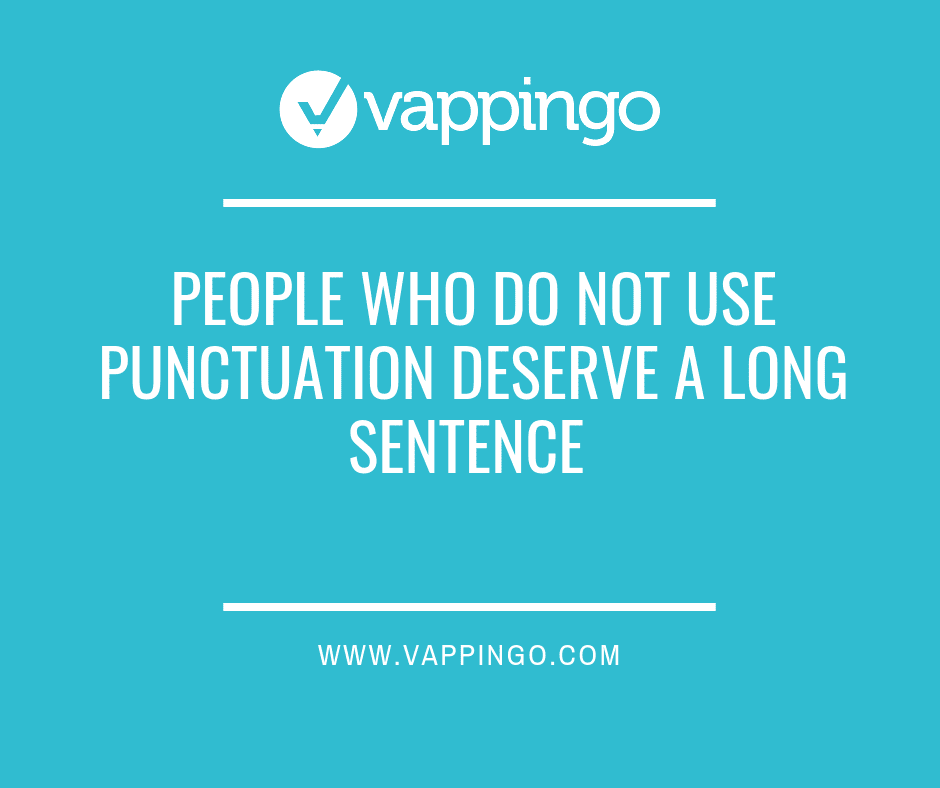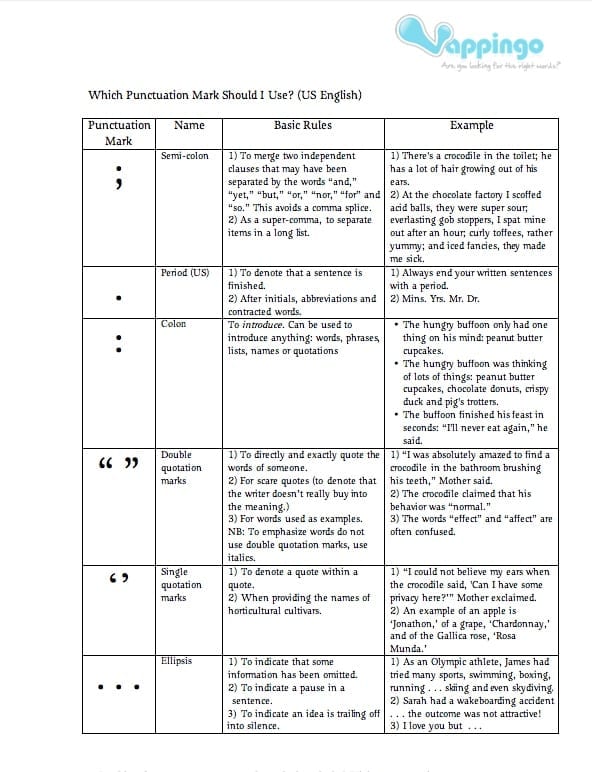 There may be many occasions when you are composing a written document that you have to stop and ask yourself: “what punctuation mark should I use?”
There may be many occasions when you are composing a written document that you have to stop and ask yourself: “what punctuation mark should I use?”
Punctuation marks can be very confusing, and there are endless lists and rules out there that dictate when you should, and should not, use them. If you are not fully confident with the rules that govern the use of punctuation marks, then our free printable punctuation cheat sheet may be just what you’re looking for. We have simplified the rules as much as possible and condensed them into a two-page cheat sheet that you can print out and refer to on a regular basis.
To access the punctuation cheat sheet, simply click on the picture below and the document will load in a new window.
If you want more in-depth information about each punctuation mark, take a look at our guide to the 14 most common punctuation marks. You may also be interested in this funny overview of why punctuation matters. For an updated version of this guide with a free printable booklet, see our guide to proofreading punctuation.
| Punctuation Mark | Basic Rules of Use | Example |
|---|---|---|
| Period (.) | Used to indicate the end of a sentence. | I am going to the store. |
| Comma (,) | Used to separate items in a list, to separate clauses in a sentence, and to set off introductory elements. | I need milk, bread, and eggs. I went to the store, but I forgot my wallet. After the game, we went out to eat. |
| Semicolon (;) | Used to separate two independent clauses that are closely related, to separate items in a list that already contain commas, or to set off items in a list that contain internal commas. | I have to finish my essay; then, I can go to bed. We visited Paris, France; Rome, Italy; and Barcelona, Spain on our trip to Europe. |
| Colon (:) | Used to introduce a list, a quote, an explanation, or an example. | There are three things you need to do: clean your room, do your homework, and take out the trash. She said it best: “Life is short.” |
| Exclamation Mark (!) | Used to indicate strong feelings or excitement. | I can’t believe we won the game! |
| Question Mark (?) | Used to indicate a question. | What time is the meeting? |
| Dash (-) | Used to set off additional information or to indicate a sudden change in thought. | I love to eat fruit – especially strawberries. I was going to go to the store, but – oh no! – I forgot my keys. |
| Quotation Marks | Used to indicate direct speech or a quote. | She said, “I am going to the store.” |
| Parentheses () | Used to enclose additional information or as a way to set off non-essential information in a sentence. | My sister (who is a doctor) will be visiting us this weekend. The cake (which was delicious) was made by my grandmother. |
| Ellipsis (…) | Used to indicate an omission or a pause in speech or thought. | The teacher asked, “Who can tell me…?” He paused before answering. |
If you like our free printable punctuation cheat sheet, please share it with others by selecting a social network site from the share bar below.
If you’re looking for some help with your written English, check out our online proofreading services.


Where can I fint Free comma cheat sheet? Thank you
Hi, we haven’t created one yet. We do have a guide to comma use that you can find here: https://www.vappingo.com/word-blog/when-to-use-commas-15-comma-rules-everyone-should-know/
and please do not use dots (.), commas (,) at inside the quoted text.
for example:
“Rosa Munda.” <- incorrect
"Rosa Munda". <- correct.
"Jonathon," <- incorrect
"Jonathon", ".." <- correct
When putting text in between parentheses, does the period go inside or outside?
Should the period go inside or outside the parentheses?